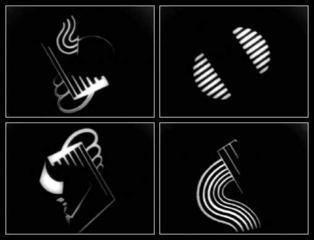 | ||
Absolute film is a film movement begun by a group of visionary artists in Germany in the 1920s: Hans Richter, Walter Ruttmann, Oskar Fischinger and the Swede Viking Eggeling.
These artists present different approaches to abstraction-in-motion: as an analogue to music, or as the creation of an absolute language of form, a desire common to early abstract art. Ruttmann wrote of his film work as 'painting in time.' They used rudimentary handicraft, techniques, and language in their short motion pictures that refuted the reproduction of the natural world, instead, focusing on light and form in the dimension of time, impossible to represent in static visual arts.
In 1926, Hans Richter stated that the absolute film originated in the scroll sketches that Viking Eggeling made in 1917-18.
